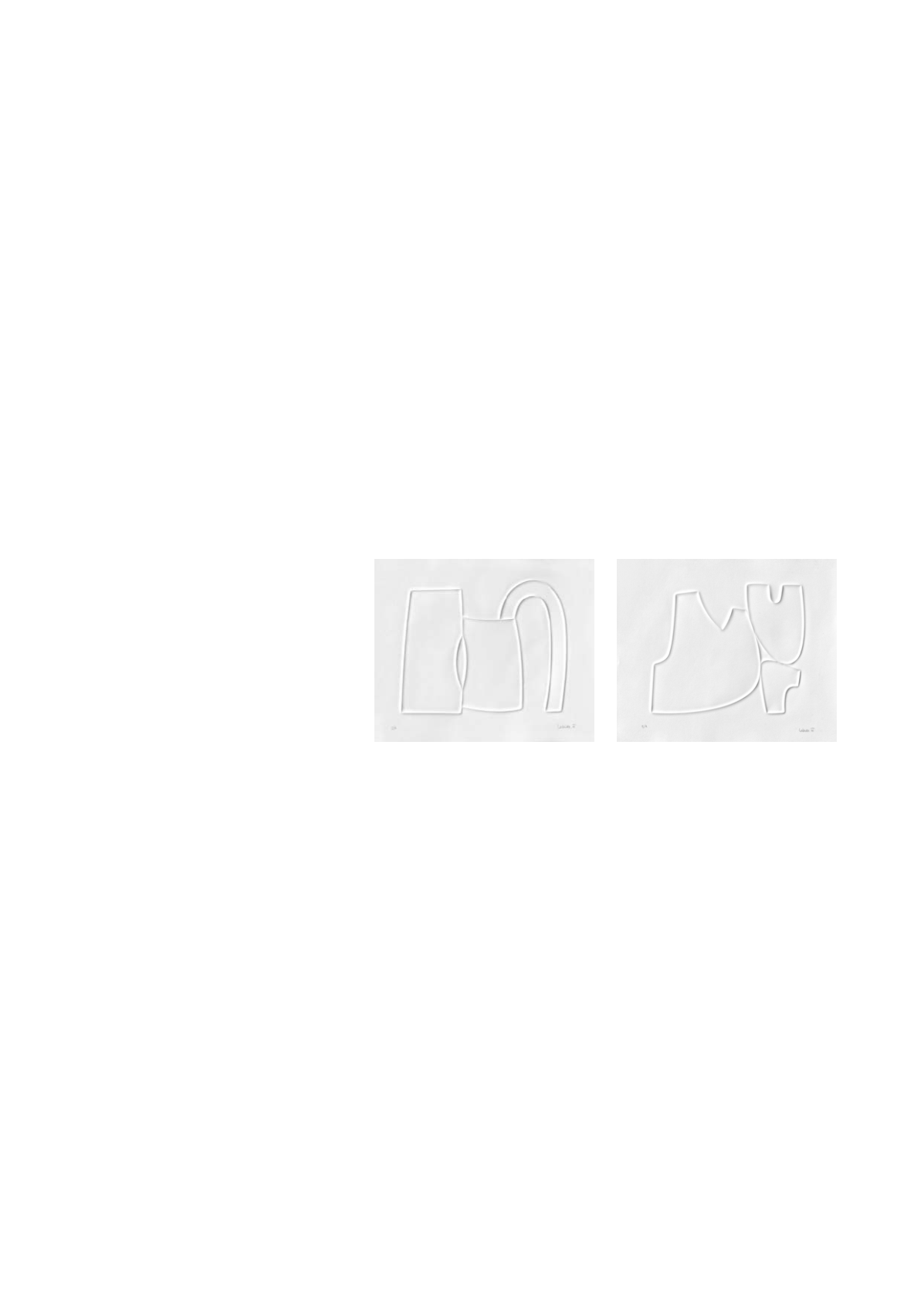
want people to say: "Look, that is by Labuda, he always photographs sea
landscapes”. Working in varied iconographies frees me from the superfi-
ciality of the diversion-seeking viewer. To a certain extent, the viewer
must work his way into my pictures if he wants to regard them with
benefit. And when he has looked carefully at several series – then and
only then will individual works appear to him as part of the whole.
Eduardo Chillida, the great master of abstract European sculpture, once
told me, "Ultimately, my whole work is a cycle and is about the struggle
for space." I will perhaps not reach Chillida’s artistic dimension, but to be
close to him in an imaginary sense after his death I would like to say:
"Ultimately, my whole work is a cycle and is about the struggle for time."
Working on several cycles and series at the same time allows me to light-
heartedly pursue the inspiration of the moment. There is always a series
in which a particular creative impulse can fit. In the summer months my
camera equipment stands ready to capture the fine nuances of light and
shadow on film. In the winter months, when it is dark, foggy and dreary
here in the north, I work in my studio completing my cycles of graphic
prints. This way of working is in beautiful harmony with the cycles of
nature.
Besides the cycles Journey to the Beginning of Time and Line, Surface,
Space and Time I have created works in the course of the years that
tive statement in contrast to the quantitative statement of the time
scales.
About working on extensive cycles
Working on a picture or sculpture cycle differs quite considerably from
working on an individual work of art. Cycles require, in advance,
lengthier intellectual reflection on and consideration of a certain theme
and its possible variations. To a certain extent, the cycle must be
completed before it is published and each individual work must be
planned in advance as to how it fits into the cycle. This is normally aided
by a canon of forms with high recognisability.
In my cycles, however, I have quite consciously foregone the tighter
framework which tends to accompany a restricted canon of forms. That
was not difficult, because in a photographic cycle the recognisability of
the artistic style of a particular photographer is not given to the same
extent as in painting. Exceptions are perhaps the oeuvres of several well-
known photographers.
I like using different iconographies, hiding behind different masks, to put
forth my artistic concerns. To me the essential thing is not the common
canon of forms, but what is common in the artistic statement of my diffe-
rent works. The same applies to graphic works and sculptures. I do not
8 -
Hagewik,
G 146
9 -
Dirlin,
G 158
4


